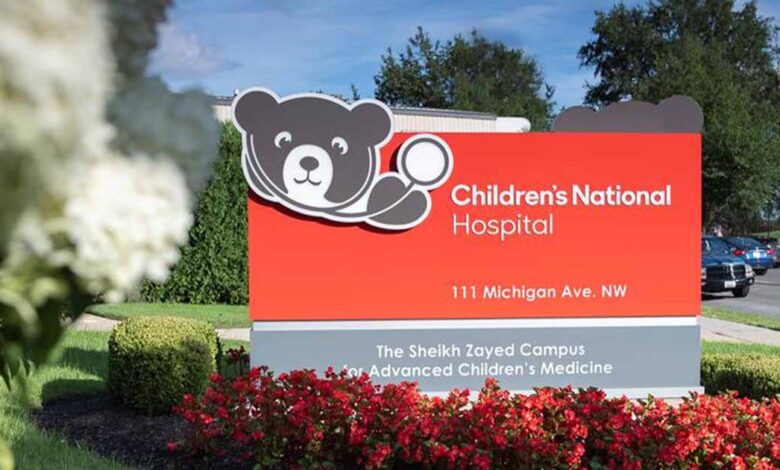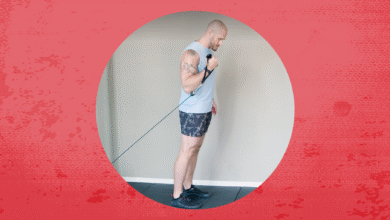How the Chief AI Officer at Children’s National approaches clinical and admin automation

Editor’s Note: This is part two of a two-part interview. To read part one, click here.
Children’s National Hospital, in Washington, D.C., is making robust use of artificial intelligence technologies in both clinical and administrative settings throughout the enterprise. While many hospitals and health systems across the country have begun to explore piecemeal AI projects and limited use cases, Children’s National is a bit ahead of the pack.
One of the reasons it has been able to go farther, and more quickly, is because it has a single person overseeing everything related to its artificial intelligence and machine learning technologies: Alda Mizaku, Children’s National’s chief data and artificial intelligence officer.
Yesterday, in part one of this two-part conversation with Mizaku, she talked about how AI chiefs require a deep understanding of the technologies and clinical operations and need strong leadership capabilities and effective communication skills, being able to talk with a diverse set of stakeholders.
Today she offers a walk-through of Children’s National Hospital’s use of artificial intelligence, provides a deeper look at one AI project she is particularly proud of and its outcomes, and offers other IT executives looking to become a Chief AI Officer some tips for the journey.
Q. Please talk at a high level about where and how Children’s National Hospital is using artificial intelligence today.
A. We’re leveraging artificial intelligence across a few areas. From a broad level, it’s decision support, looking at patients, creating efficiencies, both in a clinical setting and in an office setting. We’re also having quite a bit of success with predictive analytics.
By using AI, the aim of the organization is to enhance our ability to get to decisions faster when we’re talking about patients and diagnosis. Looking at treatment plans and the steps that are part of those treatment processes to ensure they’re personalized and that we have an effective way to track and document the notes generated as part of those office visits and hospital visits.
We’re looking at optimizing resource allocations as well and ultimately improving both the outcomes for patients and operational workflows. The majority of our artificial intelligence work is focused in that area currently.
Q. This time, a little more specifically, I’m hoping you can describe and discuss one particular AI project you are proud of that is working well for the organization. What are some outcomes you are seeing? How did you oversee this project?
A. One that I’m incredibly proud of and something we put into effect rather recently is in collaboration with Microsoft, where we brought in our technical team and we collaborated with Microsoft technical experts as well.
The intent was to create and facilitate a rapid prototype session. We wanted to build four rapid prototypes in under two days. We hear the concept of fail-fast, so we wanted to work with the leading experts in this space to be able to understand some of the ideas we were interested in and how successful we could be at building some of those prototypes to see whether that would be effective in our day-to-day operations.
We had more than 10 departments that came and participated as part of that process, really bringing team science into effect. We had a great partnership with Microsoft. It was a successful initiative. In just two days, we ended up building four prototypes.
One was focused on, generally, being able to search documents like policies and procedures and have changed the way that people interact with data and information that’s stored in policies and procedures. Instead of having to look at a document, you can ask the AI the question and get back an answer without having to do a lot of searching. We were able to build a prototype around that.
Then we focused on some of the clinical space where we targeted notes generated from a hospitalization, and we created summaries of those notes with a different persona in mind. A note that could go to the patient’s parent, a set of notes written in the patient’s language, it’s something they could understand.
Another one that could go to the primary care physician, another one that can go to our revenue cycle department so they can understand some of the billing aspects of what was delivered in the care. We also did something we call Next Best Action, which is focused on looking at all of the appointments that could come after that interaction and engagement that we had with the patient and aggregating those into a common list that then can be followed up on.
If the doctor makes a recommendation to see a specialist or come back to that office or run a particular test, all of that is aggregated by AI and makes it very easy to find all the information that was recommended to the patient. We also looked at some very specific ways of changing some of the alerting and alert fatigue that happened in the healthcare space and piloted a system in that area just to see what was possible.
A lot of opportunities and a lot of ideas that came out of that collaboration.
Q. What are three or four tips you would offer to other IT executives looking to become a Chief AI Officer for a hospital or health system?
A. I’ve got three or four I can share. The first one is understanding the clinical landscape, making sure that someone has a deep understanding of the clinical workflows and challenges in those workflows. That can happen in partnership with someone in the organization, but that knowledge just goes a long way in identifying where AI can bring real value.
Another one is around fostering collaboration. We talked about that yesterday as well, so just building really strong relationships with clinical operational IT teams. That collaboration leads to successful AI implementation.
Another one is finding a way to stay current. AI technology is moving so quickly, so staying abreast of all of the latest developments and all of the regulations and all the new things we’re seeing on a day-to-day basis can be a challenge. Finding a way to stay connected to new initiatives, new opportunities, some of the cutting-edge technology and some of the compliance rules coming out.
Then lastly, it’s just to focus on responsible use and ethics. Just to prioritize the time that it takes to really think through the deployment of AI and take those responsible use considerations in place and ensuring patient data, privacy and security, that they’re always at the forefront so we’re able to innovate and bring great technology, but do so safely in a responsible way.
To watch a video of this interview that contains BONUS CONTENT not found in this story, click here.
Editor’s Note: This is the third in our series, Chief AI Officers in Healthcare. To read the first, an interview with Dennis Chornenky at UC Davis Health, click here. To read the second, with Dr. Karandeep Singh at UC San Diego Health, click here.
Follow Bill’s HIT coverage on LinkedIn: Bill Siwicki
Email him: [email protected]
Healthcare IT News is a HIMSS Media publication



